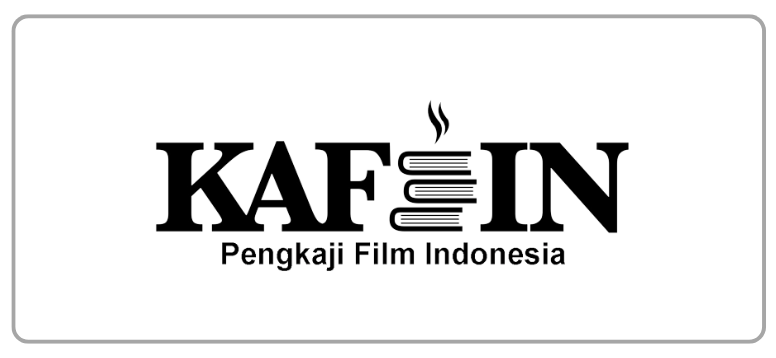Tolerance Tourism: A Historical Perspective on Cultural Integration in Glodok Chinatown Jakarta
DOI:
https://doi.org/10.21512/humaniora.v16i1.13257Keywords:
tourism tolerance, heritage tourism, peranakan chinese indonesia, historical, cultural integrationAbstract
The research examines the multifaceted history of tolerance tourism in Glodok Chinatown, Jakarta, Indonesia, with a focus on the Peranakan Chinese community and its unique cultural heritage. Glodok's development as a tourism destination is examined through the lens of "tolerance tourism", with the region's diverse ethnic and religious groups serving as the primary element in the development of heritage tourism. To understand the impact of events, policies, and social dynamics on tourism growth, the study employs a qualitative thematic approach to analyze historical literature spanning from colonial times to the present. The analysis examines the efforts by government bodies and local stakeholders, including the cultural ambassadors, to promote Glodok Chinatown's cultural heritage while ensuring inclusivity and community empowerment. The research also critically assesses the challenges faced, such as maintaining cultural authenticity amidst commodification and the need for balanced development that empowers local communities alongside economic growth. The research concludes by emphasizing the importance of inclusive tourism policies, effective communication strategies, and sustained stakeholder involvement to achieve truly successful and sustainable tolerance tourism in Glodok Chinatown. By understanding the historical context and the dynamic interactions between various stakeholders in Glodok Chinatown, the study provides valuable insights for the development of culturally sensitive and community-empowering tourism models in similar multicultural settings.
References
Ahmadi, A. (2021). The traces of oppression and trauma to ethnic minorities in Indonesia who experienced rape on the 12 May 1998 tragedy: A review of literature. Journal of Ethnic and Cultural Studies, 8(2), 126-144. https://doi.org/10.29333/ejecs/744
Ahmed, S. K., Mohammed, R. A., Nashwan, A. J., Ibrahim, R. H., Abdalla, A. Q., M. Ameen, B. M., & Khdhir, R. M. (2025). Using thematic analysis in qualitative research. Journal of Medicine, Surgery, and Public Health, 6, 100198. https://doi.org/10.1016/j.glmedi.2025.100198
Alfandy, M., & Krisnadi, A. R. (2023). Pengaruh daya tarik wisata terhadap minat berkunjung wisatawan di kawasan pecinan Glodok Jakarta Barat sebagai wisata sejarah dan budaya. Jurnal Syntax Fusion, 3(09), 948-961. https://doi.org/10.54543/fusion.v3i09.358
Alyani, L. (2021). Pengaruh jumlah kunjungan, lama tinggal dan belanja wisatawan terhadap pendapatan asli daerah sektor pariwisata di Provinsi Daerah Khusus Ibukota Jakarta. Jurnal Syntax Transformation, 2(2).
Amin, S. (2020). Diversity, tourism, and economic development: A global perspective. Tourism Analysis, 25(1), 21-41. https://doi.org/10.3727/108354220X15758301241602
Andiani, N., & Ekomadyo, A. S. (2021). Menelusuri ruang ekonomi kota sebagai genius loci di kawasan pecinan Jakarta Barat. Jurnal Arsitektur Zonasi, 4(3), 2021. https://doi.org/10.17509/jaz.v4i3.38124
Andini, D. A., & Nugraha, R. N. (2023). Kawasan pecinan Glodok sebagai daya tarik wisata kuliner. Jurnal Manajemen Perhotelan Dan Pariwisata, 6(2), 565-578.
Astuti, T. M. P., Kurniawan, E., Setyowati, D. L., Syifauddin, M., & Machmud, A. (2019). Living tourism and tolerance tourism of a multicultural society in Lasem, Rembang, Central Java. International Journal of Innovation, Creativity and Change, 8(6), 319-331. https://www.ijicc.net/images/vol8iss6/8624_Astuti_2019_E_R.pdf
Bacsi, Z. (2017). Tourism and diversity. Journal of Regional Development and Tourism, 9(2), 25-57. https://doi.org/10.32725/det.2017.011
Basri, D. M. E., Masieh, A. N., Shafira, F. B., & Sandora, P. A. (2020). Muallaf center design as an implementation of psycological and economical effect for muallaf in Malaysia. Jurnal Arsitekta, 2(2), 1-9.
Baycar, H. (2023). Promoting multiculturalism and tolerance: Expanding the meaning of “unity through diversity” in the United Arab Emirates. Digest of Middle East Studies, 32(1), 40-59. https://doi.org/10.1111/dome.12282
Blackburn, S. (2024). Jakarta: Sejarah 400 tahun. Masup Jakarta.
Bond, M. H. (1998). Unity in diversity: Orientations and strategies for building a harmonious, multicultural society. Trames. Journal of the Humanities and Social Sciences, 2(3), 234-263. https://doi.org/10.3176/tr.1998.3.03
BPS-Statistic Indonesia. (2021). Statistik sosial budaya 2021. Badan Pusat Statistik.
Budianto, V., Tadeus, R. Q. E., Djaukar, J., Ekomadyo, A. S., & Sugangga, M. (2023). An evaluation of the alleys of Glodok and its market culture. ARTEKS : Jurnal Teknik Arsitektur, 8(3), 395-404. https://doi.org/10.30822/arteks.v8i3.2547
Byrd, E. T., & Gustke, L. (2007, July). Using decision trees to identify tourism stakeholders based on level of participation in tourism and community political activities. 2007 TTRA International Conference. https://hdl.handle.net/20.500.14394/48112
Christalyn, R., & Sarudin, R. (2024, August 27). Analysis of the influence of Chinese cuisine culinary tourism on the image of Glodok Chinatown destination in West Jakarta. Global Sustainable Tourism Conference: Charting Paths for Responsible Travel 2024. https://journal.ubm.ac.id/index.php/glost/article/viewFile/5856/3099
Christian, Y., & Kasimun, P. R. (2023). Mengangkat atraktor budaya dan komunitas di kawasan Glodok untuk wadah eksploratif kesenian dan edukasi generasi muda. Jurnal Sains, Teknologi, Urban, Perancangan, Arsitektur (Stupa), 5(2), 1107-1118. https://doi.org/10.24912/stupa.v5i2.24259
Christina, A., Tony, & Handhayani, T. (2024). Enhancing tourist experiences in Glodok Pancoran through virtual tours. Iota, 4(4), 836-849. https://doi.org/10.31763/iota.v4i4.837
Corsale, A. (2021). Jewish heritage tourism in Krakow. Authenticity and commodification issues. Tourism and Hospitality, 2, 140-152. https://doi.org/10.3390/tourhosp2010008
Febriana, I., Bihaqqis, R. A., Sari, W., Dewi, R., Yuridin, Y., Sulhan, S., & Kadir, S. A. (2024). State reconciliation in resolving cases of past serious human rights violations (case study of the Trisakti Tragedy and May 1998 riots). Formosa Journal of Applied Sciences, 3(3), 909-924. https://doi.org/10.55927/fjas.v3i3.7847
Harjatanaya, T. Y., & Hoon, C. Y. (2020). Politics of multicultural education in post-Suharto Indonesia: A study of the Chinese minority. Compare: A Journal of Comparative and International Education, 50(1), 18-35. https://doi.org/10.1080/03057925.2018.1493573
Himawan, E. M., Pohlman, A., & Louis, W. (2022). 22 tahun setelah kerusuhan anti-Cina Mei 1998, riset ungkap prasangka dan trauma masih ada. Journal of Current Southeast Asian Affairs, 41(2), 240-257. https://doi.org/10.1177/18681034221084320
Hoon, C.-Y. (2021). Chinese Indonesians in post-Suharto Indonesia: Democratisation and ethnic minorities, written by Wu-Ling Chong. Journal of Chinese Overseas, 17(2), 419-422. https://doi.org/10.1163/17932548-12341451
Iskandar, H. (2022). Peran Koko Cici Jakarta dalam promosi destinasi budaya Tionghoa studi kasus Petak 9 Jakarta. Jurnal Manajemen Perhotelan Dan Pariwisata, 5(2), 144-151.
Jingga, F., & Lukito, Y. N. (2021). Ethnic identity and its response to the growing environment in the urban space of Glodok, Jakarta. AIP Conference Proceedings, 2376. https://doi.org/10.1063/5.0064109
Julianto, G. F., & Ridaryanthi, M. (2023). Intercultural interaction and communication at the Chinatown marketplace, Petak Sembilan, Indonesia. E-Bangi Journal of Social Science and Humanities, 20(2), 74-80. https://doi.org/10.17576/ebangi.2023.2002.07
Krisnadi, A. R., Djati, S. P., Nurbaeti, N., & Wulan, S. (2022). Identification of urban areas as urban tourism destinations in the Special Capital Region of Jakarta. International Conference on Research and Development (ICORAD), 1(2), 188-204. https://doi.org/10.47841/icorad.v1i2.34
Kuntjara, E., & Hoon, C. Y. (2020). Reassessing Chinese Indonesian stereotypes: Two decades after Reformasi. South East Asia Research, 28(2), 199-216. https://doi.org/10.1080/0967828X.2020.1729664
Lee, K.-H. (2024). Chinese identity in Indonesia. Malaysian Journal of Chinese Studies, 13(2), 117-120. https://doi.org/10.6993/MJCS.202412_13(2).0006
Lestari, S., & Tohjiwa, A. D. (2019). Perubahan elemen arsitektur Tionghoa di kawasan pecinan Glodok (Changes of Chinese Architectural Elements in Glodok Chinatown). Tesa Arsitektur, 20(2), 90-104.
Maccannell, D. (1973). Staged authenticity: Arrangements of social place in tourist setting. American Journal of Sociology, 79(3), 589-603. https://doi.org/https://doi.org/10.1086/225585
Mandasar, R., & Setiawan, B. (2023). Cultural Tourist attractions at the Cap Go Meh Festival in Singkawang City. Syntax Transformation, 4(12).
Marlina, E., Sukmawati, A. M., & Wahyuhana, R. T. (2024). The correlation between cultural tourism motivation and tourism tolerance. Tourism and Hospitality, 5(4), 1236-1259. https://doi.org/10.3390/tourhosp5040069
Mubah, A. S., & Anabarja, S. (2020). Globalization, national identity and citizenship: Dilemma of Chinese Indonesians in Indonesian nation-building. Tamkang Journal of International Affairs, 23(3), 55-102. https://doi.org/10.6185/TJIA.V.202001_23(3).0002
Nabilah, A., & Setiawan, T. (2023). Revitalisasi pecinan Glodok. Jurnal Sains, Teknologi, Urban, Perancangan, Arsitektur (Stupa), 5(1), 227-238. https://doi.org/10.24912/stupa.v5i1.22624
Naeem, M., Ozuem, W., Howell, K., & Ranfagni, S. (2023). A step-by-step process of thematic analysis to develop a conceptual model in qualitative research. International Journal of Qualitative Methods, 22. https://doi.org/10.1177/16094069231205789
Neuman, W. (2014). Social research methods: qualitative and quantitative approaches. Pearson.
Niemeijer, H. E. (2012). Batavia: masyarakat kolonial abad XVII. Masup Jakarta.
Nursanty, E., & Rahmawaty. (2025). The borders of history: Maintaining authenticity in Java’s heritage cities. SARGA: Journal of Architecture and Urbanism, 19(1), 40-55. https://doi.org/10.56444/sarga.v19i1.1610
Oktarina, F., Ridwan, K., & Kurniawan. (2021). The history of Jakarta’s Chinatown: The role of the city gate as a transition area and a starting point in the spatial transformation from the first Chinatown to the renewal phase. SPAFA Journal, 5, 1-24. https://doi.org/10.26721/spafajournal.2021.v5.650
Onghokham. (2017a). Migrasi Cina, Kapitalisme Cina dan Anti Cina. Komunitas Bambu.
Onghokham. (2017b). Riwayat Tionghoa Peranakan di Jawa. Komunitas Bambu.
Ostrowska-Tryzno, A., & Pawlikowska-Piechotka, A. (2021). Multicultural heritage as a basis for sustainable development of urban tourism in Warsaw – COVID-19 pandemic time. MAZOWSZE Studia Regionalne, Special Edition (Special Edition), 11-29. https://doi.org/10.21858/msr.se.2021.01
Perdana, A. P., & Woerjantari, K. (2022). Proceedings of the 2 nd ITB Graduate School Conference Strengthening Multidisciplinary Research to Enhance its Impact on Society Place Attachment Study in Chinatown (Case Study: Pancoran Glodok Chinatown and Pantjoran PIK Chinatown). 2nd ITB Graduate School Conference, 217-231.
Prasetyo, K. B., Putri, N. A., & Pramono, D. (2024). Initiating a multicultural tourism village to overcome disasters of intolerance and social disintegration. International Journal of Multicultural and Multireligious Understanding, 11(2), 271. https://doi.org/10.18415/ijmmu.v11i2.5584
Pratiwi, W. D. (2011). Multicultural heritages in a city as productive tourism places. ASEAN Journal on Hospitality and Tourism, 10, 51-62.
Qin, X., Shen, H., Ye, S., & Zhou, L. (2021). Revisiting residents’ support for tourism development: The role of tolerance. Journal of Hospitality and Tourism Management, 47, 114-123. https://doi.org/10.1016/j.jhtm.2021.02.010
Rianto, R. (2021). Potensi pengembangan kawasan pecinan Glodok petak sembilan sebagai pariwisata budaya Tionghoa di Jakarta [The potential of the development of the pecinan Glodok area of Nine Places as a cultural tourism in China]. Jurnal Hospitality Dan Pariwisata, 7(5), 47-60. http://dx.doi.org/10.30813/jhp.v7i1.2633
Salim, N., & Abdul Rahman, N. (2022). Politicization and commodification of tourism: Implications for George Town world heritage site. International Journal of Academic Research in Business and Social Sciences, 12(12). https://doi.org/10.6007/ijarbss/v12-i12/14916
Salman, D., Purwasito, A., & Rais, W. A. (2023). How media remembered the past: Framing Analysis of the May 1998 Tragedy in Indonesian print newspapers (1999-2008). Jurnal Komunikasi: Malaysian Journal of Communication, 39(2), 312-324. https://doi.org/10.17576/JKMJC-2023-3902-17
Setiawati, R. (2020). Community empowerment as a tourist attraction and creative economy development in Kota Tua Jakarta. Journal of Indonesian Tourism and Policy Studies, 5(2). https://doi.org/10.7454/jitps.v5i2.1102
Setijadi, C. (2023). Memories of unbelonging: Ethnic Chinese identity politics in post-Suharto Indonesia. University of Hawaii Press. https://doi.org/10.1515/9780824896058
Situmeang, B. U., Septiano, S. N., & Abiansyah, N. (2024). Daya tarik kuliner di Glodok dengan culture Tionghoa sebagai potensi pariwisata. Journal of Social and Economics Research, 6(2). https://doi.org/10.54783/jser.v6i2.704
Sudarwani, M. M., Purwanto, E., & Rukayah, R. S. (2022). The survival of Chinatown architecture: Lasem Chinatown, Indonesia. ISVS E-Journal, 9(2), 1-17.
Sulistyo, A. (2019). Wisata kawasan pecinan Kotatua Jakarta suatu tinjauan potensi pengembangan pariwisata perkotaan di Indonesia. Jurnal Sosial Dan Humaniora, 4(1), 73-90.
Suprajitno, S. (2020). Reconstructing Chineseness: Chinese media and Chinese identity in post-reform Indonesia. Kemanusiaan the Asian Journal of Humanities, 27(1), 1-23. https://doi.org/10.21315/kajh2020.27.1.1
Tiffany, T., & Alimin, N. N. (2023). Cultural acculturation study of visual form of facades and spatial organization of Glodok’s shophouses, Jakarta Barat, Indonesia. Journal of Architectural Design and Urbanism, 5(2), 72-85. https://doi.org/10.14710/jadu.v5i2.16338
Viljoen, J., & Henama, U. S. (2017). Growing heritage tourism and social cohesion in South Africa. African Journal of Hospitality, Tourism and Leisure, 6(4). https://www.ajhtl.com/uploads/7/1/6/3/7163688/article_11_vol_6__4__2017.pdf
Downloads
Published
How to Cite
Issue
Section
License
Copyright (c) 2025 Zsarin Astria Puji Insani, I Made Sendra, Nararya Narottama

This work is licensed under a Creative Commons Attribution-ShareAlike 4.0 International License.
Authors who publish with this journal agree to the following terms:
a. Authors retain copyright and grant the journal right of first publication with the work simultaneously licensed under a Creative Commons Attribution License - Share Alike that allows others to share the work with an acknowledgment of the work's authorship and initial publication in this journal.
b. Authors are able to enter into separate, additional contractual arrangements for the non-exclusive distribution of the journal's published version of the work (e.g., post it to an institutional repository or publish it in a book), with an acknowledgment of its initial publication in this journal.
c. Authors are permitted and encouraged to post their work online (e.g., in institutional repositories or on their website) prior to and during the submission process, as it can lead to productive exchanges, as well as earlier and greater citation of published work.
USER RIGHTS
All articles published Open Access will be immediately and permanently free for everyone to read and download. We are continuously working with our author communities to select the best choice of license options, currently being defined for this journal as follows: Creative Commons Attribution-Share Alike (CC BY-SA)




















